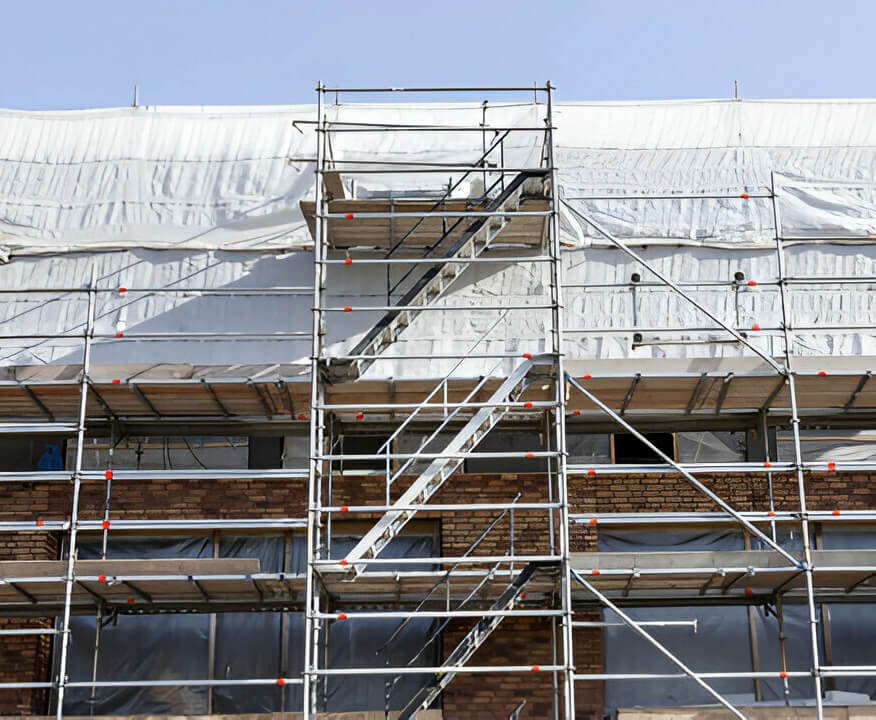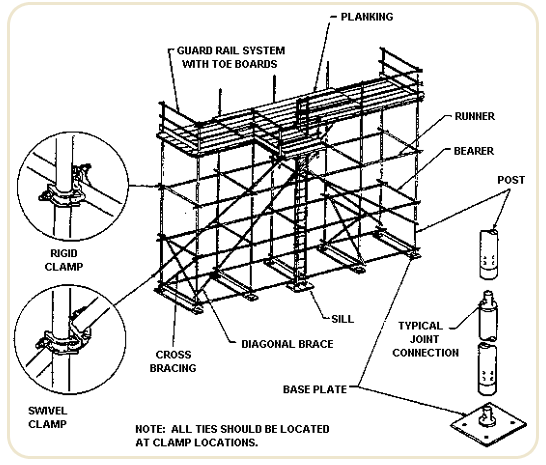Discovering the Various Kinds Of Scaffolding Made Use Of in Building Tasks
The construction market depends greatly on different kinds of scaffolding to satisfy details task requirements, each offering unique benefits and applications. Traditional structure scaffolding gives a strong foundation for general tasks, while put on hold scaffolding is crucial for work on skyscraper structures.

Conventional Frame Scaffolding
Standard structure scaffolding is one of the most extensively utilized methods in the building sector because of its toughness and convenience. This system includes vertical and horizontal structures that are constructed to produce a steady platform for products and employees. The primary elements include upright messages, horizontal ledgers, and diagonal braces, which together supply a strong structure that can sustain substantial lots.
Among the vital advantages of traditional structure scaffolding is its flexibility to various building and construction tasks, ranging from residential buildings to large industrial structures. The modular layout permits for easy assembly and disassembly, making it efficient for both long-term and short-term jobs. Additionally, the system can be tailored in height and width, fitting different building styles and site conditions.
Safety and security is extremely important in scaffolding applications, and conventional framework systems are equipped with guardrails and toe boards to avoid falls and make certain worker security. Moreover, routine assessments and adherence to security guidelines are vital in maintaining the honesty of the scaffold. Generally, traditional structure scaffolding continues to be a basic choice in the construction sector, providing a trustworthy platform for labor and enhancing overall task efficiency

Suspended Scaffolding
Suspended scaffolding supplies a distinct remedy for building and construction tasks that need accessibility to elevated surface areas, particularly in circumstances where typical frame scaffolding may be not practical. This sort of scaffolding is typically put on hold from the roof or top levels of a structure, utilizing a system of systems, wheels, and ropes to create a functioning space that can be changed to different heights.
Among the primary benefits of suspended scaffolding is its adaptability. It can be easily rearranged or reduced to fit changes in building and construction requirements, making it perfect for tasks such as home window setup, façade job, and upkeep on skyscrapers. In addition, the very little impact of put on hold scaffolding permits much better use of ground room in metropolitan settings, where space is usually restricted.
Safety and security is an important factor to consider in the use of suspended scaffolding. Generally, put on hold scaffolding offers a reliable and reliable option for accessing hard-to-reach locations in different construction situations, enhancing both efficiency and safety and security on site.
System Scaffolding
System scaffolding, commonly considered as a modern solution in the scaffolding sector, contains pre-engineered components that can be swiftly constructed and adjusted for various construction jobs. Scaffolding. This kind of scaffolding is defined by its modular style, which permits for versatility and efficiency on work websites, fitting various heights and architectural needs
Commonly made from high-strength steel or light weight aluminum, system scaffolding supplies boosted resilience and stability. The parts consist of upright articles, horizontal journals, and angled dental braces, which interconnect safely, making sure a durable structure. The layout typically incorporates standardized fittings, streamlining assembly and disassembly processes, thereby minimizing labor time and expenses.

Rolling Scaffolding
Moving scaffolding is a functional option to traditional fixed scaffolding, created for flexibility and convenience of usage on building websites. This sort of scaffolding contains a system sustained by structures with wheels, permitting workers to conveniently relocate it as required. The wheelchair feature significantly enhances performance, as it minimizes downtime associated with putting together and dismantling taken care of scaffolding.
Typically built from light-weight materials such as light weight aluminum or steel, rolling scaffolding offers a durable yet portable solution for jobs needing regular repositioning - Scaffolding. It is particularly useful in tasks such as painting, drywall installment, and electric work, where access to various elevations and places is required
Security is paramount in rolling scaffolding layout, with functions such as securing wheels content to avoid unplanned movement when in usage, and guardrails to safeguard workers from falls. In addition, several models are adjustable in elevation, fitting numerous project requirements.
Cantilever Scaffolding

The style of cantilever scaffolding normally involves making use of brackets or arms anchored to a structure or structure, enabling the platform to extend exterior safely. Security is extremely important; thus, these scaffolds should be crafted to endure various lots and ecological conditions. Routine assessment and maintenance are important to make certain architectural honesty and worker security.
Cantilever scaffolding is preferred for its convenience and efficient use of room, making it a preferred selection in urban environments where area constraints are typical. It facilitates less complicated accessibility to high altitudes, ultimately adding to the general effectiveness of building and construction jobs. Similar to all scaffolding types, appropriate training and adherence to security standards are vital for workers using cantilever scaffolding.
Conclusion
Conventional structure scaffolding gives stability, while suspended scaffolding supplies convenience for raised jobs. System scaffolding assists in quick assembly, and rolling scaffolding enhances mobility for differing work atmospheres.
Traditional framework scaffolding supplies a sturdy structure for basic jobs, while suspended scaffolding is vital for job on skyscraper structures.Moving scaffolding is a versatile option to you can try this out traditional set scaffolding, designed for movement and convenience of use on construction sites. As with all scaffolding kinds, appropriate training and adherence to safety and security criteria are vital for workers utilizing cantilever scaffolding.
Traditional framework scaffolding offers stability, while suspended scaffolding provides adaptability for elevated jobs. System scaffolding promotes quick assembly, and rolling scaffolding boosts mobility for varying job atmospheres.